From golf to the 5km rule, health experts have their say on Melbourne’s restrictions
From playing golf, to the 5km rule and wearing masks, top epidemiologists have weighed in on some of Melbourne’s most contested restrictions.
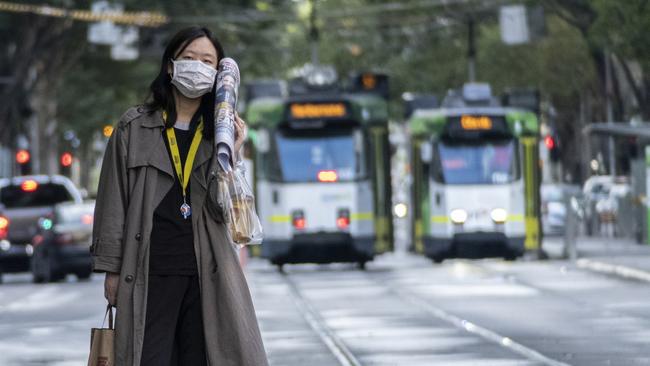
Coronavirus
Don't miss out on the headlines from Coronavirus. Followed categories will be added to My News.
AS Victorians hold their breath in anticipation of a “COVID normal,” top epidemiologists have weighed in on some of the state’s remaining restrictions and what life could be like in the foreseeable future.
From seeing friend and family outdoors, to masks and the general easing of restrictions Professor Catherine Bennett, Chair of Epidemiology at Deakin University, Professor Peter Collignon, an Infectious Diseases Physician from the Australian National University (ANU), and Melbourne University’s Professor John Mathews, an expert in epidemiology from the school of population and global health, debate the effectiveness of Victoria’s ongoing rules.

THE 5KM TRAVEL LIMIT
The Premier says:
It’s about reducing movement … if people are moving freely, logic just tells you there is a far greater risk of people infecting others and not just infecting people in their own family.”
Catherine Bennett: “If (cases) continue to disappear and we don’t find more, then there’s less of an argument (for the 5km rule). Our actual transmission is very low but the question is what is the real risk? Are these mystery cases spread throughout Melbourne or are they contained? I think the real issue with step two and the 5km is some of the freedoms that are allowed are actually, in effect, not allowed because of the 5km rule.”
Peter Collignon: “A lot of the transmission in Melbourne has been in places where essential workers work so the 5km rule didn’t actually stop those. There are a lot of social and economic costs to stopping travelling … it may be entirely appropriate when you have 700 cases a day but when you get down to handful, it’s minimal. I thought it would be one of those ones you could drop sooner, rather than later.”
John Mathews: “It could be time to review the 5km rule. All that 5km limit achieves is to limit the distance between an (unknown) infective and the next person in the potential chain of infection; in theory this will help with contact tracing, but the improvement will be small and at the cost of alienating many members of the public.”
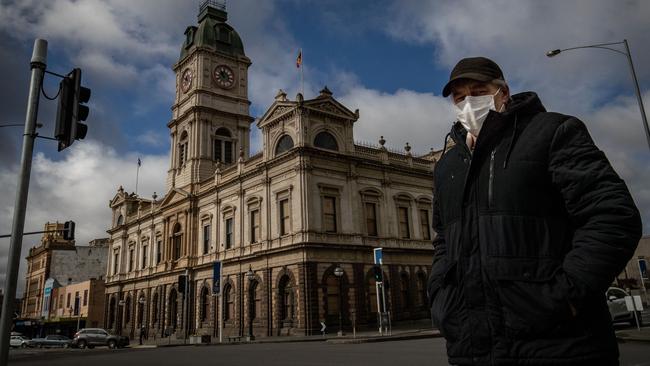
WEARING MASKS IN REGIONAL AREAS WHEN OUTDOORS AND SOCIALLY DISTANCED
The Premier says:
“I’ve been clear in my judgment, significant benefit — very low cost … you wear a mask because it’s of some benefit.”
CB: “I do think we will lose people’s willingness to comply with masks if we don’t start to focus where we’re asking people to wear masks. (For example) not asking people to wear them out in a paddock by themselves or with their family. The chance of now being in, say, Ballarat and running into someone with the virus is very low.”
PC: “If you have little or no transmission, wearing a mask is going to have little impact.
If you’re out in the country by yourself or with your family, what benefit is a mask? There’s been very little documented transmission in outdoor settings.”
JM: “The risk of a new transmission will be very small in regional Victoria, so the additional benefit of mask wearing will be negligible in areas where there are no known cases. So again there is a very small benefit which will be achieved at the cost of alienating many people on isolated farms and others in regional Victoria.”
WEARING MASKS IN MELBOURNE WHEN OUTDOORS, SOCIALLY DISTANCED
The Premier says:
“I think they play an important part. There will come a time when they’re not needed. When that time comes, then people won’t have to wear them.”
CB: “They will have their place and they will continue as part of our prevention strategy but I don’t think it will be mandatory all the time.”
PC: “The risk in Melbourne is different to that in the country. Whatever rules we put in place — and we’re going to have to for the next few years — they’re going to have to make biological sense. Masks have a place. They particularly decrease the chance of you spreading (COVID-19) to others. But it’s about number five or six on the line (after) all those other things — not going to work when sick, washing your hands and social distancing.”
JM: “In Melbourne, the wearing of masks should still be mandatory in hot spot suburbs and in at-risk work environments such as meatworks, and of course in health care situations. As a precaution it would still be wise to recommend masks for all adults in all parts of Melbourne.”
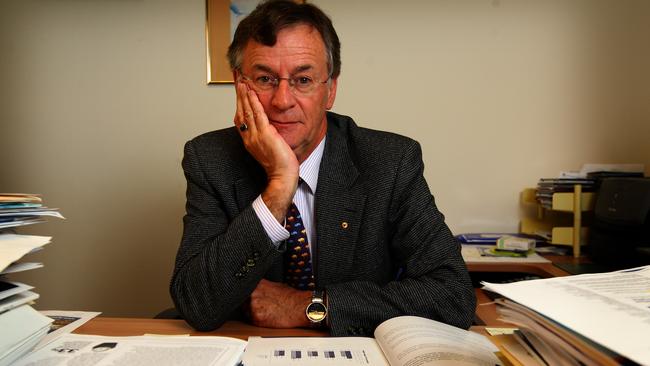
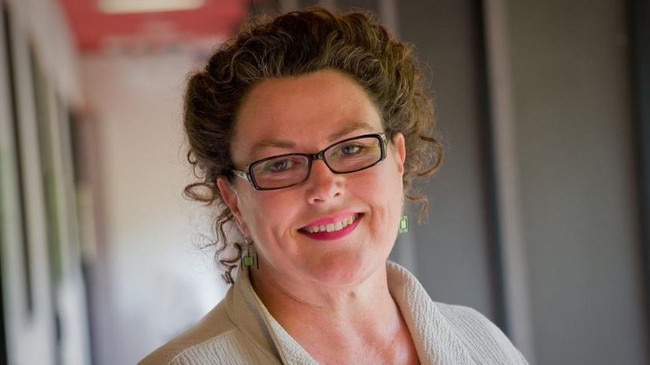
THE CURFEW
The Premier says:
“This strategy only works if we limit movement, and the traffic data … makes it very, very clear that the curfew does limit movement.”
CB: “I think all these things are going to be really important to look back at. Looking at how many clusters came from events before, during and after curfew. But if in fact the curfew just added another layer of legality, then it might not have been of any benefit. Yes it stopped mobility at night but did it increase mobility in the day? The truth is we don’t know and there wasn’t good evidence to say put it in place from a health perspective … every layer to a restriction has a cost.”
PC: “Nobody knows the answer … you do need restrictions and limits on restaurants and bars, but equally I’m not sure the data is there that if you have really hard lockdowns you get a better result. There’s not a correlation between hard long lockdowns and better medium-to-long term results.”
JM: “The curfew was pretty obviously aimed at stopping (young) people going out to socialise or party at night. In this it was mostly effective … There was no rationale for limiting other night-time movements of individuals that would not involve contact with other people. For example, there would be no risk of transmission if a person wanted to go for a 5km run alone at 10pm, so why should this be banned?”
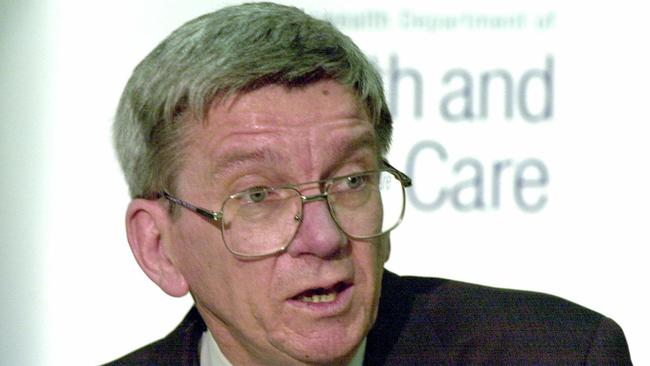
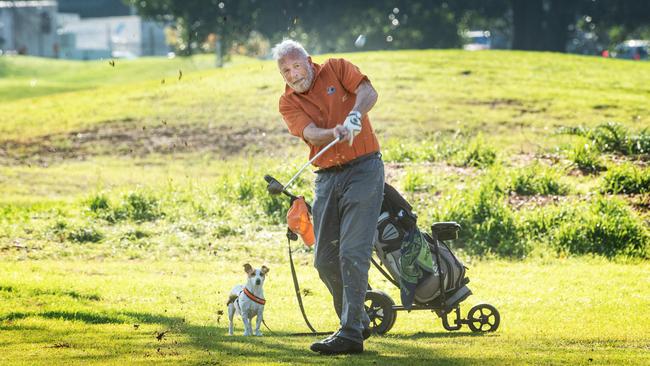
GOLF OR TENNIS BANNED BUT CRICKET NETS OPEN
Premier: “[If opened] we will end up with a large amount of people compressed into a small amount of public golf courses that don’t have the staff and ability to be able to manage that.”
CB: “Going to your local tennis club and your local cricket nets, you’re less likely to share equipment. Local (golf) courses could manage that, they could allow people in … (it’s) not the golf itself [that’s the issue].
“You should have a rule that people can apply to any setting, rather than the rules being different.”
PC: “I would have thought a lot of sports you could start doing. The further you’re apart on the playing field the safer it is. Anything where there’s small groups of people, apart – it’s about basics for transmission, inside is much more dangerous than outside.
“Preferably change and shower at home, anything you can do to avoid being inside with other people.”
JM: “The overarching principle is to limit the potential for close contact between individuals. “Playing golf alone would be safe if the player practices social distancing on the course and does not socialise after play is finished. Cricket nets would be slightly higher risk, because several players will be touching the same ball and equipment and will be closer to each other in the course of play. Similar remarks apply to tennis. Again the sporting restrictions can be relaxed some more as the number of active cases in Melbourne continues to decline.”
THE ‘SLOW AND STEADY’ EASING OF RESTRICTIONS
The Premier says: “We can’t just say, right, these numbers are low, it’s done. It is not, it will come back with fury.”
CB: “I do think you want to open up slowly. It’s about managing the risk of virus and people’s sense of safety. We don’t want to create more anxiety. (But) can we put that ring around actual cases and clusters, rather than trying to manage it across the whole city? Lockdown isn’t getting rid of the cases, it’s just keeping us protected from a bigger outbreak. The real issue is how do we put out these spot fires? This is really about managing the risk or spread should the virus appear in different parts of the community.”
PC: “You need to be slow and steady — you can argue how many restrictions but you want to make sure your curve is going down. The principle is what people need to get: outdoors is better than indoors, kids are safer than adults, wash your hands and if you can’t physically distance, wear a mask and/or face shield.
JM: “On the whole I think the slow and steady approach has been justified, and it has been successful. However, it would have been better to explain the rationale for what was required, to trust people and to not alienate them by making it unlawful to do things that carried no risk — solitary golf or fishing, solo walk in the park, solo run in the evening.”
MORE NEWS
QUARANTINE HOTEL GUARDS AXED, POLICE STEP IN
WORST COVID-IOTS OF MELBOURNE’S WEST

